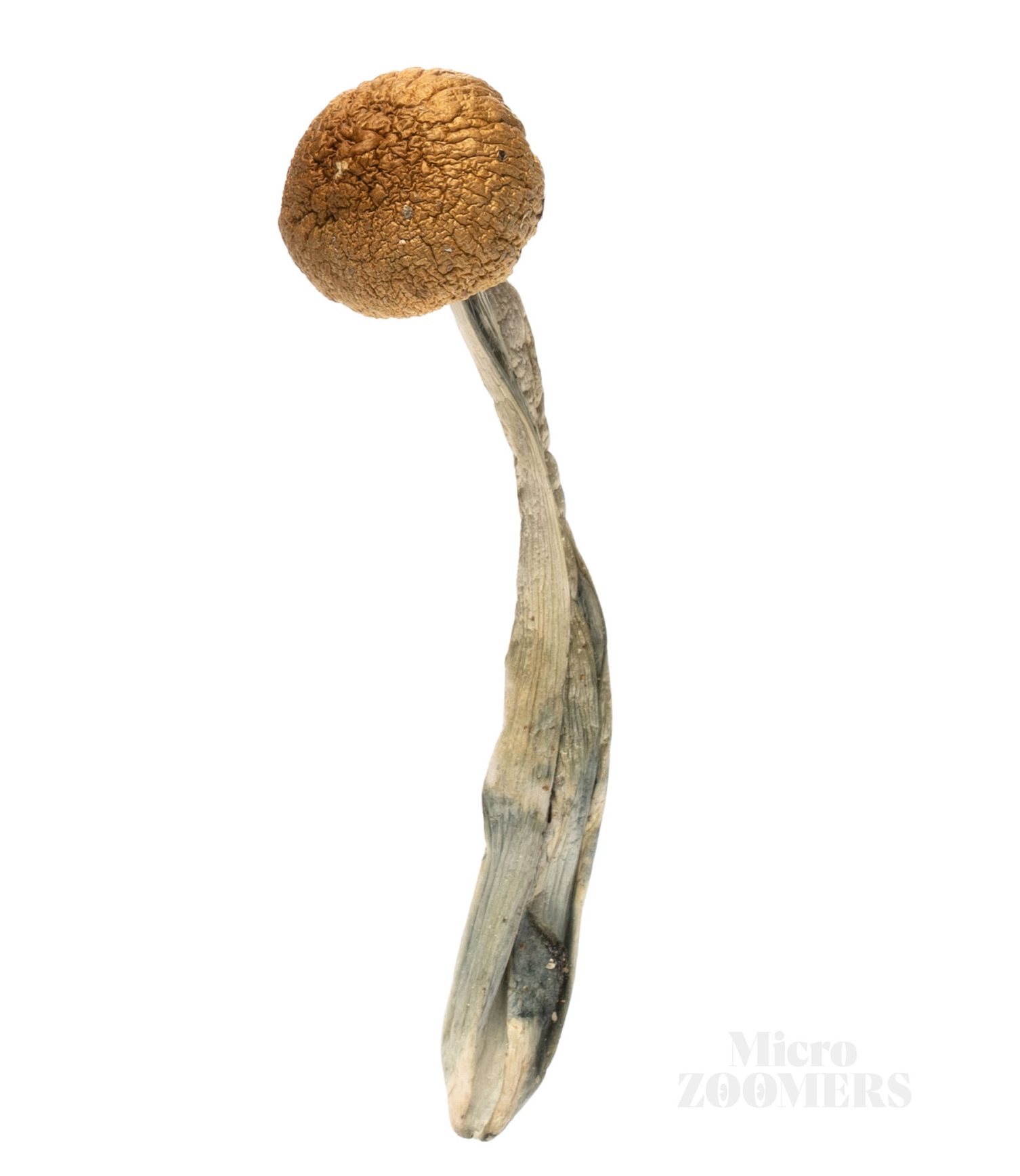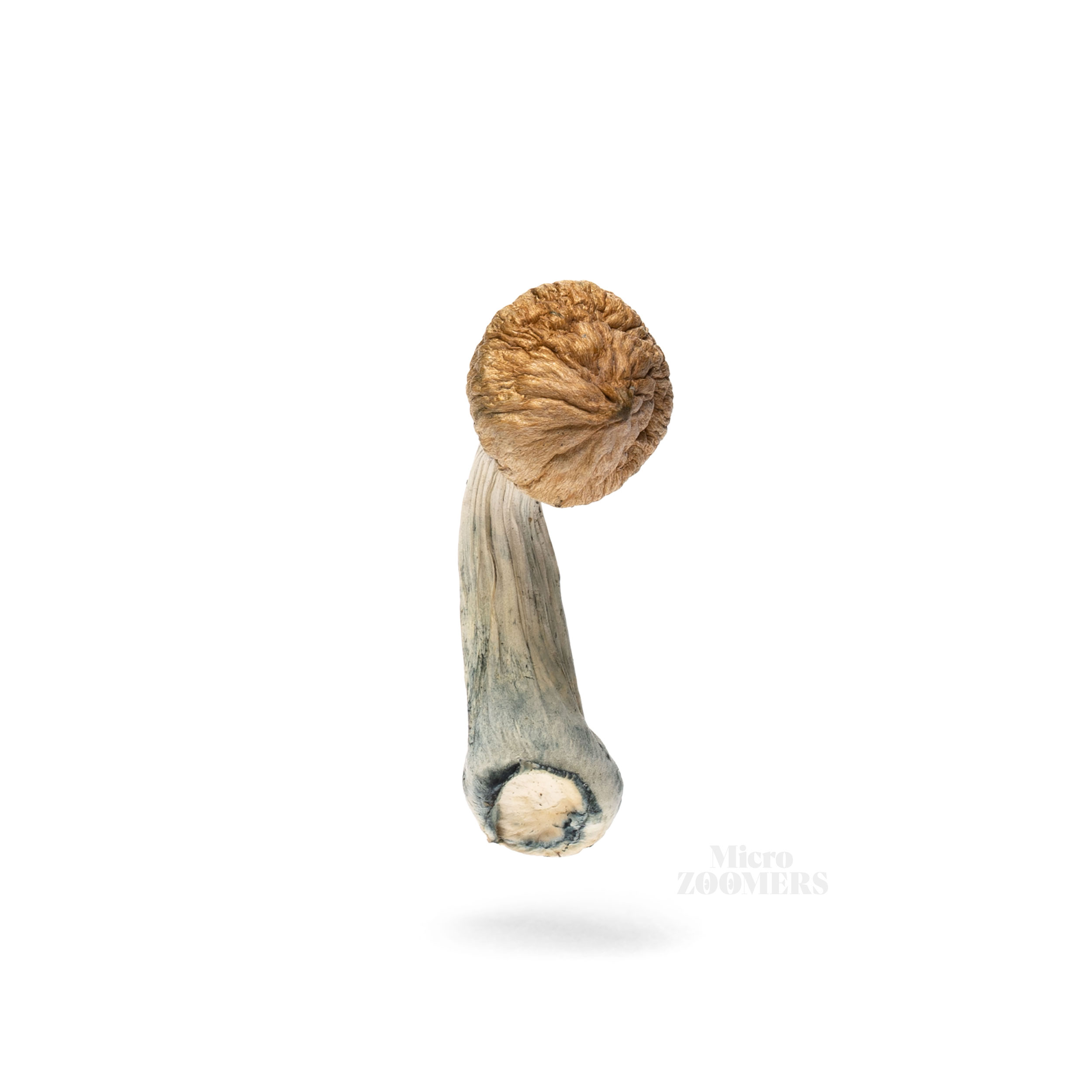
PSILOCYBE CUBENSIS
Psilocybe Cubensis, “Golden Top” or “Cubes”, is the most emblematic of the magic mushroom strains out there. Its popularity comes from its worldwide distribution as well as its amazingly resistant nature and ease of cultivation.
Psilocybe cubensis was first documented in 1906 when it was found growing on cow dung in a pasture in Cuba, thus its epithet “cubensis” meaning “from Cuba”. Studies by the Mexican Psilocybe expert Gaston Guzmán suggest that Psilocybe cubensis aka “Golden Tops” is actually indigenous to Africa and that this dung-loving specie used horses to travel by boat alongside the Spaniards during the Inquisition; horses followed the conquistadores on land, and the poop did the rest…
Formerly known as Naematoloma caerulescens (1907) and Stropharia cyanescens (1941), Psilocybe cubensis was first identified by Franklin Sumner Earle and named Stropharia cubensis (1904). It was found growing respectively in northern Vietnam and Florida, another example of the optimum proliferation of these dung-loving species.
Psilocybe cubensis is a meaty looking magic mushroom, with a generally dense stem and a large, bulbous, broad golden cap. Commonly called “Golden Tops”, “Cubes” or Golden Halo, P. cubensis is like the mother of all cubensis strains.
Its resistant nature, manageable potency, relatively easy growth and generous fruiting have made him the most popular choice for cultivation. From the Hymenogastraceae family, it is known to grow naturally worldwide in tropical and subtropical areas.
History believes that the trade routes of the Spanish missionary expeditions could have carried spore mass from subtropical African islands to the New World. This explains why Psilocybe cubensis is the only entheogenic mushroom specie carrying an epithet relating to Spanish Catholicism and used by the indigenous people when referring to it: San Isidro, the Spanish Saint of farming.
In the mid-seventies, following an increase of interest in the vision-giving powers of these magic mushrooms, travellers brought back spores to Mexico, Guatemala, Ecuador, Columbia and the Amazon; the strains carried the names of their place of origin such as Matias Romero, the Brazil strain, the Ecuadorian, the Amazon strain, the Argentinian strain, and the Palenque strain. This worldwide distribution remarkably increased their accessibility, and thus their popularity.
Today, Psilocybe cubensis is probably the most widely known, cultivated, and consumed magic mushroom strain. Because it is considered to have a moderate potency and has been around for so long, it is one of the most trusted and preferred strains for beginner psychonauts.
Some sub-species of the Cubensis strain include Golden teacher, B+, A+. And so many more that are considered “hybrids” are descendants passing on the impeccable cubensis genes.
Because this strain has undergone more than a decade of artificial mutation, its appearance and potency can drastically change, with 60 cataloged strains of Psilocybe Cubensis to this day, and many more on their way, we can all agree the lineage of the species is both fascinating and exceptional.
Visual Description
PSILOCYBE CUBENSIS Potency
Habitat Origin






